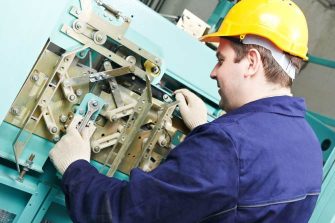A Thorough Approach to Enhancing Performance Via Strategic Lift Repair Techniques
A critical and organized technique to raise fixing and maintenance is necessary to take full advantage of performance and minimize downtime. By dealing with typical lift issues, implementing aggressive upkeep procedures, and establishing targeted repair service plans, centers can maximize their lift systems to run at peak efficiency levels.
Importance of Lift Efficiency Optimization
Comprehending the relevance of maximizing lift efficiency is crucial for guaranteeing trustworthy and reliable vertical transportation systems in various buildings and frameworks. Lifts are vital elements of contemporary infrastructure, supplying vertical flexibility for passengers and products within structures of varying elevations. By enhancing lift efficiency, structure proprietors and facility supervisors can improve customer experience, boost energy effectiveness, and increase general operational performance.
Effective lift efficiency optimization entails various variables, including rate, capacity, energy maintenance, safety, and usage needs. Correctly enhanced lifts can reduce wait times for individuals, specifically in high-traffic buildings, resulting in improved satisfaction and performance. Additionally, optimized lifts add to energy financial savings by utilizing advanced control systems and innovations that reduce power consumption without compromising performance.

Identifying Common Lift Issues
Determining usual lift issues is crucial for preserving the functional effectiveness and safety and security of vertical transportation systems in structures. This concern can be indicative of troubles with the lift's motor, control system, or also the placement of the lift automobile.
One more common lift concern is weird sounds rising from the lift shaft or equipment area. These sounds can vary from grinding or scratching sounds to loud clunking noises, every one of which may signal underlying mechanical issues that require immediate focus. Additionally, frequent door malfunctions, such as doors not opening up or shutting appropriately, can interfere with the smooth circulation of guests and pose safety and security threats.
Executing Proactive Maintenance Steps
To optimize the efficiency and long life of lift systems, aggressive upkeep procedures play a critical function in making sure functional dependability and safety. lift breakdown. Implementing positive maintenance involves methodically inspecting, maintenance, and fixing elements before they fail, hence protecting against expensive downtime and prospective safety hazards. Frequently scheduled examinations can assist determine minor problems prior to they escalate into significant problems, inevitably prolonging the lifespan of lift systems
One trick element of proactive upkeep is creating an in-depth maintenance timetable based on supplier suggestions and sector finest practices. This timetable should lay out tasks such as lubrication, positioning checks, and component replacements at defined intervals. Furthermore, applying condition tracking strategies, such as vibration analysis and thermal imaging, can assist spot very early indicators of wear or malfunction.
Moreover, training upkeep staff on appropriate examination techniques and preventative upkeep procedures is vital for the effective implementation of proactive maintenance procedures. By fostering a culture of positive upkeep within a company, lift systems can operate at peak efficiency levels, minimizing interruptions and making certain the safety and security of users.
Developing Targeted Repair Work Plans
Upon evaluating the maintenance records and performance information, the design group can create targeted fixing strategies to enhance and lift repair deal with particular problems lift system performance. These repair work plans are tailored to the recognized troubles, making certain that resources are focused on solving crucial issues successfully. By prioritizing fixings based on their influence on performance and security, the targeted repair strategies aid lessen downtime and upkeep prices while optimizing the lift system's dependability.
Establishing these strategies includes a complete analysis of the find out here lift system components, including electric motors, cable televisions, brakes, and control systems. Through this thorough evaluation, the engineering group can figure out the source of any type of malfunctions or destruction in performance. This information is after that used to develop a roadmap for the repair service process, laying out the needed steps, timeline, and sources needed to address each concern successfully.
Additionally, targeted repair service plans might include preventative actions to improve the lift system's long life and performance. By proactively resolving prospective concerns before they rise, these plans contribute to the total effectiveness and safety of the lift system.
Using Data-Driven Insights
Harnessing the power of data-driven understandings is essential in optimizing lift system performance and upkeep efficiency. By leveraging data analytics, lift operators can make informed choices that bring about improved operational efficiency and price savings. With the evaluation of historic efficiency data, patterns and patterns can be determined, making it possible for predictive maintenance techniques to be applied. These predictive maintenance strategies help avoid unforeseen break downs, decrease downtime, and prolong the life expectancy of lift systems.

Conclusion
To conclude, enhancing look at here lift efficiency is critical for guaranteeing efficiency and security in buildings. By determining usual lift concerns, applying proactive maintenance procedures, creating targeted fixing strategies, and making use of data-driven insights, organizations can improve performance and reduce downtime. It is very important to take a thorough method to lift repair work methods to make the most of operational effectiveness and make certain the longevity of lift systems.
By resolving typical lift concerns, applying positive maintenance measures, and creating targeted fixing strategies, centers can maximize their lift systems to run at peak performance levels.An additional widespread lift problem is odd noises emanating from the lift shaft or machinery area.Upon analyzing the upkeep documents and performance data, the design group can develop targeted repair work plans to address details concerns and maximize lift system capability. By prioritizing repair work based on their influence on performance and safety, the targeted repair work plans help reduce downtime and upkeep prices while maximizing the lift system's reliability.
It is important to take a detailed method to raise repair work strategies to maximize functional performance and make sure the longevity of lift systems.
Comments on “Emergency Lift Repair Solutions: Best Lift Service Company Options”